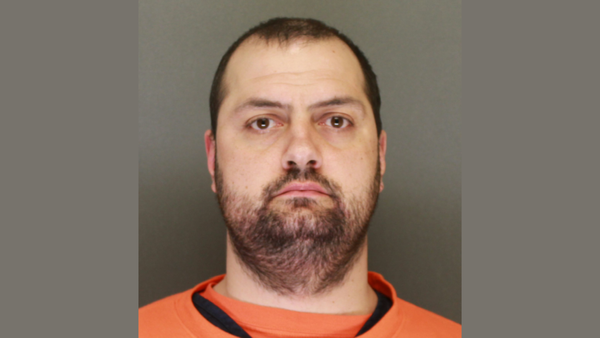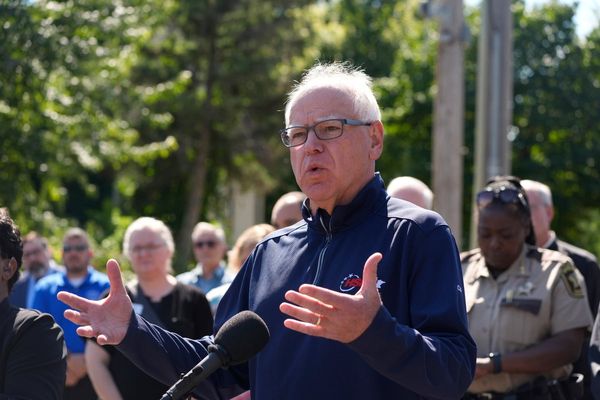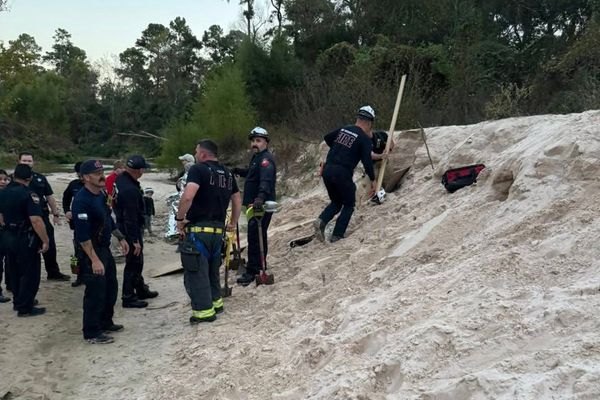
It’s been more than 20 years since Scott Peterson was sentenced to death for the murder of his pregnant wife Laci in suburban California. For many, the case was considered open and shut.
Then, in late April, the Los Angeles Innocence Project (LAIP) made a seemingly bombshell announcement.
The non-profit declared in a court filing that after a year-long investigation it had uncovered new evidence that “eviscerates” the prosecution’s theory of what occurred, and proves Peterson’s innocence.
“This new evidence undermines the prosecution’s entire circumstantial case against Petitioner, and shows that the jury relied on false evidence, including false scientific evidence, to convict him,” the organization, which provides pro bono legal services to people it believes have been wrongfully convicted, stated in a lengthy petition filed to a state appeals court.
The news marked a major development in a case that has transfixed the US since Laci Peterson was first reported missing while eight months pregnant on Christmas Eve 2002. But what does it mean for the 52-year-old Peterson, who has always claimed he did not commit the crime, and the efforts to overturn his conviction?
The burden on Peterson is high, said Eric Faddis, a trial attorney and former deputy district attorney, but the LAIP appears to have conducted a substantial investigation and generated what they believe are compelling reasons to take another look.
“The question for the court will be: do all of these potential errors amount to enough in order to decide that had the jury heard about this new evidence they would have drawn a different conclusion?” said Faddis, a founding partner of firm Varner Faddis.
•••
When the LAIP announced in January 2024 that it was investigating the Peterson case, the news was met with skepticism and in some cases scorn.
Laci Peterson, 27, disappeared from her home of Modesto, a city of 200,000 in California’s Central Valley, in December 2002, drawing intense and widespread media coverage. The remains of Laci and her unborn child were recovered from the San Francisco Bay in April 2003.
Scott Peterson, at the time a 30-year-old fertilizer salesman, was a suspect from the outset, and it was quickly revealed he had engaged in multiple affairs. One woman came forward publicly, saying they had a romantic relationship and that Peterson had claimed he was a widower preparing to spend his first Christmas alone before his wife’s disappearance.
Prosecutors argued during the closely watched trial that Peterson did not want to be a father and smothered his wife around Christmas Eve before using a newly purchased fishing boat to dump her body into the bay. Peterson had told police that he had been out fishing at the Berkeley Marina in the San Francisco Bay the day Laci disappeared. Her remains were eventually discovered just a few miles from the marina.
He was convicted of the killings in 2004, and sentenced to death the following year. The California supreme court overturned the death sentence in 2020 over a juror issue, and he received a new sentence of life without the possibility of parole.
However, Peterson has maintained his innocence, and claimed he received an unfair trial, with police more focused on arresting him than investigating what happened to Laci. In 2022, he sought a new trial alleging that his original trial was tainted by a juror who lied about her history of abuse – a judge denied his request.
In a court filing, the LAIP, which filed motions seeking DNA testing and discovery, argued that the prosecution suppressed and destroyed critical exculpatory evidence before the trial and violated Peterson’s rights to due process and a fair trial.
The filing lays out what the LAIP describes as new evidence in support of a theory Peterson’s defense argued during his trial – that Laci was abducted and held for several days by someone else, before she was killed and her body dumped in the bay in an effort to “shift blame” on to Scott (it was widely reported that he had been fishing in the area the day of her disappearance).
The LAIP presents new evidence showing a home across the street from the Petersons was burgled the day of Laci’s disappearance, and that a witness reportedly heard a conversation between the burglars that Laci saw them and confronted them. The organization also says it has obtained new “sworn statements” from witnesses who reported seeing Laci in the neighborhood after prosecutors claim Scott killed her.
It also argues it has uncovered new evidence linking the burglars to a van that was set on a fire nearby and had a mattress inside with “apparent bloodstains”. The filing states the prosecution suppressed evidence of the police investigation into that incident and that it has not been subjected to more “precise DNA testing” to establish a link to Laci’s case.
As part of their investigation, the LAIP said it interviewed a retired Los Angeles police department lieutenant and police practices expert who reviewed police reports in the case and concluded that the Modesto police department investigation was disorganized and did not adhere to standard police procedures.
A key argument from last month’s filing emphasizes that new research and methods to determine fetal growth indicate that the Petersons’ unborn child was older than the prosecution’s expert witness, Dr Greggory DeVore, said – meaning Laci was killed days after the prosecution claimed.
“New evidence by Dr Doubilet shows that recent medical research published in peer-reviewed medical journals establishes that Laci and Conner were not killed until days after Laci was reported missing, at a time Petitioner could not possibly have been responsible for their deaths,” the filing states.
“These new scientific research and longitudinal studies all show that Dr DeVore’s opinion – which was based on a study published in 1984, when fetal biometry research was in its infancy – was wrong.”
Paula M Mitchell, the director of the Los Angeles Innocence Project, argued in the petition that the prosecution’s case was entirely circumstantial, and that it was highly likely the jury would not have reached a guilty verdict if they had heard the evidence laid out in the petition.
“In my opinion, once the police locked on to Mr Peterson as the prime suspect, they had no interest in finding evidence showing that someone other than Scott may have abducted Laci Peterson because that evidence did not fit with their working theory of the case,” Mitchell wrote.
•••
The re-examination of the case has, perhaps unsurprisingly, proved controversial. After the news broke, the famed New York-based Innocence Project made a statement noting the LAIP is “wholly independent” from its organization.
Neama Rahmani, the president of West Coast Trial Lawyers and a former federal prosecutor, said he was surprised in some ways that the LAIP decided to work with Peterson. “They’ve done good work,” he said. “There’s just so much evidence [against Peterson].”
He expressed skepticism at the LAIP’s findings, and arguments of Peterson’s innocence, stating he didn’t see any “fatal flaws” in the case.
“Maybe it’s the former prosecutor in me, but when you’re having an affair and your pregnant wife ends up many miles away from her home, very close to where you were fishing, does not strike me as a very good defense case.
“I don’t think this is enough to get Scott Peterson a new trial. The standard when it comes to habeas relief is very high,” he said. “I don’t think this new evidence exonerates Scott Peterson. I don’t think much of this is that new.”
Faddis agreed that meeting the standard for relief was difficult, but said the LAIP had made a “compelling” attempt.
Included in the petition was a declaration from Peterson describing his behavior in his marriage as “disgraceful and immature” but denying he played a role in the death of his wife and their unborn child, who they had planned to name Conner.
“I have steadfastly maintained my innocence from the moment my wife went missing on December 24 2002, throughout my trial, appeal, and post-conviction proceedings, and to this day,” he wrote. “I had absolutely nothing to do with the disappearance and deaths of my wife and son.”







